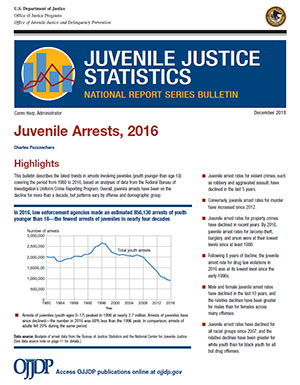All OJJDP publications may be viewed and downloaded on the publications section of the OJJDP website. Print publications may be ordered online at the National Criminal Justice Reference Service website.
Coming Soon—
Studying Drivers of Risk and Needs Assessment Instrument Implementation in Juvenile Justice
(Bulletin)
Juvenile justice practitioners often use risk and needs instruments to assess a youth’s risk of reoffending and identify factors that, if addressed, can reduce the risk of recidivism. In addition, these professionals rely on assessment findings to develop a treatment and service plan that will appropriately target a youth’s individual needs and promote the best possible outcomes. Research suggests that the effectiveness of an assessment instrument is influenced by how well it is implemented. This bulletin examines two OJJDP-supported studies that examine the factors—such as staff training and buy-in, managerial support, and stakeholder engagement—that appear to drive effective implementation.
 Juvenile Arrests, 2016
(Bulletin)
Juvenile Arrests, 2016
(Bulletin)
This bulletin describes the latest trends in arrests involving juveniles (youth younger than age 18) from 1980 to 2016, based on analyses of data from the Federal Bureau of Investigation’s Uniform Crime Reporting Program. Overall, juvenile arrests have been on the decline for more than a decade; however, patterns vary by offense and demographic group. Juvenile arrest rates for violent crimes, such as robbery and aggravated assault, have declined in the past 5 years. Conversely, juvenile arrest rates for murder have increased since 2012. Property crimes have declined in recent years and by 2016, the juvenile arrest rates for larceny-theft, burglary, and arson were at their lowest levels since at least 1980. Following 6 years of decline, the juvenile arrest rate for drug law violations in 2016 was at its lowest level since the early 1990s.
